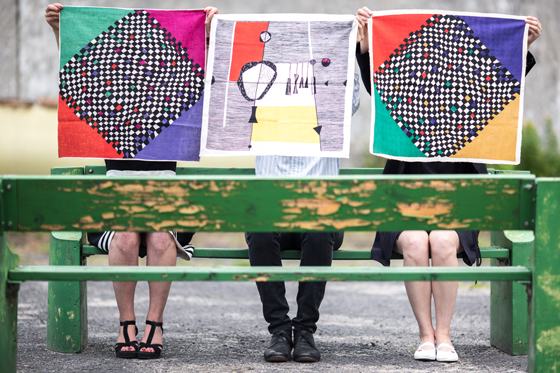Polish Design History
Text by TLmag
Brussels, Belgium
04.03.15
Pushing beyond national borders, today’s fiercely energetic Polish design scene hasn’t forgotten its heritage. Emblematic of how history can influence contemporary design to foster new narratives, The Centre of Modern Design’s one-of-a-kind archive – founded in 1978 by Wanda Telakowska – which she later donated to the National Museum in Warsaw – comprises more than 25 thousand objects.
Giving Contemporary Creation Historical Context
The Palace of Culture and Science of Warsaw, 1952-1955, before and after 2005
Such a collection testifies to the dynamism of modern Polish design, between 1920 and 1930 – with such examples as the Ład Cooperative, known for their burnt-pine furniture, kilims, Jacquard textiles and pottery. The archive also reveals Meko modern colour-infused furniture, influenced by De Stijl and the Bauhaus, modernist Warsaw-based architects and hidden secrets from Academy of Fine Arts and Design, Wrocław.
The Golden age of Polish design, so-called ‘contemporary’ style, was especially important from 1956 to 1965, under the directive of the Industrial Design Institute and a new generation of designers including Teresa Kruszewska and Andrzej Nehring. The 1950’s were a highly creative period, where screen-printed textiles designed by folk artists and designers were joined by the advent of new glass and ceramics industries – emerging from the 1940‘s to early 1950‘s. Włocławek handpainted faience was followed by printed earthenware – everyday-use glass manufactured in Silesian factories and designed at the Academy of Fine Arts and Design, Wrocław.
The Tower of the International Fair of Poznań near the New School of Form, 1929
Porcelain figurines defined Polish ceramics between 1957 and 1964, taking inspiration from Henry Moore’s organic sculptures. Such oeuvres continue to inspire contemporary designers and are still produced by Ćmielów.
Now that the ‘designed and produced in Poland’ motto is on a come-back, Polish designers and studios are reinterpreting icons, thanks to brand-, product- and designer-based platforms such as Nasz. Some are exploring the artistic heritage of Neoplasticism, with new materials and innovative ideas for domestic and reclaimed public space.
With today’s freedom of speech, the Polish design scene is more then ever, innovative – accounting for a strategic position within Central Europe. A special tribute goes to Oskar Hansen and his followers, who have continuously advanced the ‘open form’ theory – as a source of humane creativity, merging and redefining the boundaries between fine and visual arts.
Museum of Modern Art Warsaw
Paulina Ołowska’s glass painting covers the Museum of Modern Art Warsaw’s facade
Modern Design Archive, National Museum Warsaw
Wladyslaw Wołkowski, named the ‘Michel Angelo of wicker,’ honoured with the médaille d’or during the international exhibition in Paris, 1937, commander of the royal Belgian court, 1957

Wladyslaw Wołkowski, named the ‘Michel Angelo of wicker,’ honoured with the médaille d’or during the international exhibition in Paris, 1937, commander of the royal Belgian court, 1957
×Selection of wicker furniture – from trays to baskets, unique rythmic patterns designed in 1950’s, 60’s and 70’s. The Olkusz museum owns an extensive Wołkowski wicker collection

Selection of wicker furniture – from trays to baskets, unique rythmic patterns designed in 1950’s, 60’s and 70’s. The Olkusz museum owns an extensive Wołkowski wicker collection
×

















